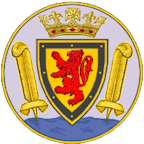History 1200 to 1300
Saltash's first known charter was granted about the year 1225. It begins: "Know all present and to come that I Reginald de Valletort have given and granted and by this my present Charter have confirmed to my Free Burgesses of Essa, all their liberties and free customs hereunder written, which they had in the time of my ancestors". These "liberties and free customs" of the burgesses were:
- They would pay rent of 6 pence a year for a full burgage (town property), 3 pence for a half-burgage, and the usual amount for other land.
- They could be tried only in the local court and by their peers, with the assistance of the Manor Lords if necessary.
- They could be summoned to the local court on only three specified dates in the year, unless by order of the King or the Lord of the Manor.
- They could elect their own reeve (town official), who would be paid for his services by a toll on all bread sold in the town and by not having to pay rent.
- The Lord of the Manor would take nothing from the town for his own use without the consent of the merchants.
- They could not be fined more than 6 pence for any single transgression.
- When any one of them died, his heir would inherit all his chattels, and could also inherit his burgage upon payment of a sum which would not exceed 30 pence.
- They would pay no taxes or levies to the Lord of the Manor, except to make his eldest son a knight, and for the marriage of his eldest daughter.
- They could pasture their animals free from September 29th to February 2nd. After that they would pay a penny for each horse, each ox, and every 10 sheep.
- None of them would be arrested and imprisoned if he could provide his peers with sureties appropriate to his offence.
- No merchant ship would be permitted in local waters for the purpose of trade if that trade was to the detriment of the town.
- The annual fair would continue to be held in the middle of the town.
- None of them would be prevented from leaving the Lord of the Manor's jurisdiction if he could leave enough possessions behind to guarantee his return.
The charter ends with the guarantee that: "these liberties and free customs afore written, I and my heirs are bounden to warrant to my aforesaid Burgesses and their heirs against all men and women. The which that it may remain ratified and unshaken, I have confirmed by my present Charter and the impression of my seal."
In 1270 the Manor of Trematon was purchased from the third Roger de Valletort by Richard, Earl of Cornwall. In addition to the ferry passage, the Lords of the Manor soon held jurisdiction over the tidal reaches of both the Tamar and the Lynher, extending their claims on oysterage and anchorage until they controlled all tolls as far upstream as the Calstock salmon weirs.
Trade on the estuaries invigorated rural life. Forder, hard by Trematon Castle, became a thriving community with industries such as market gardening, quarrying, lime burning, fulling and flour milling. The water mill where the medieval tenants of Trematon brought their grain to be milled can still be seen today. The inhabitants of Esse, however, probably relied on the nearer tide mill at Salt Mill Creek, just north of the new town.
While the hillside community at Esse centred on the market, the waterfront area developed around the ferry trade and other maritime pursuits. Before the end of the century there was a Town Quay with a ship yard in the vicinity, and probably fish cellars would have been built alongside the cottages inhabited by the ferrymen, the fishermen, and those working the oyster beds.
As the new town grew, its name metamorphosed, going from 'Esse' to 'Asshe', and then adding the prefix 'Salt' (to distinguish it from other towns with similar names). By 1300 there were 118 burgesses living in the borough now known as 'Saltasche'.
page updated 2025-03-21
